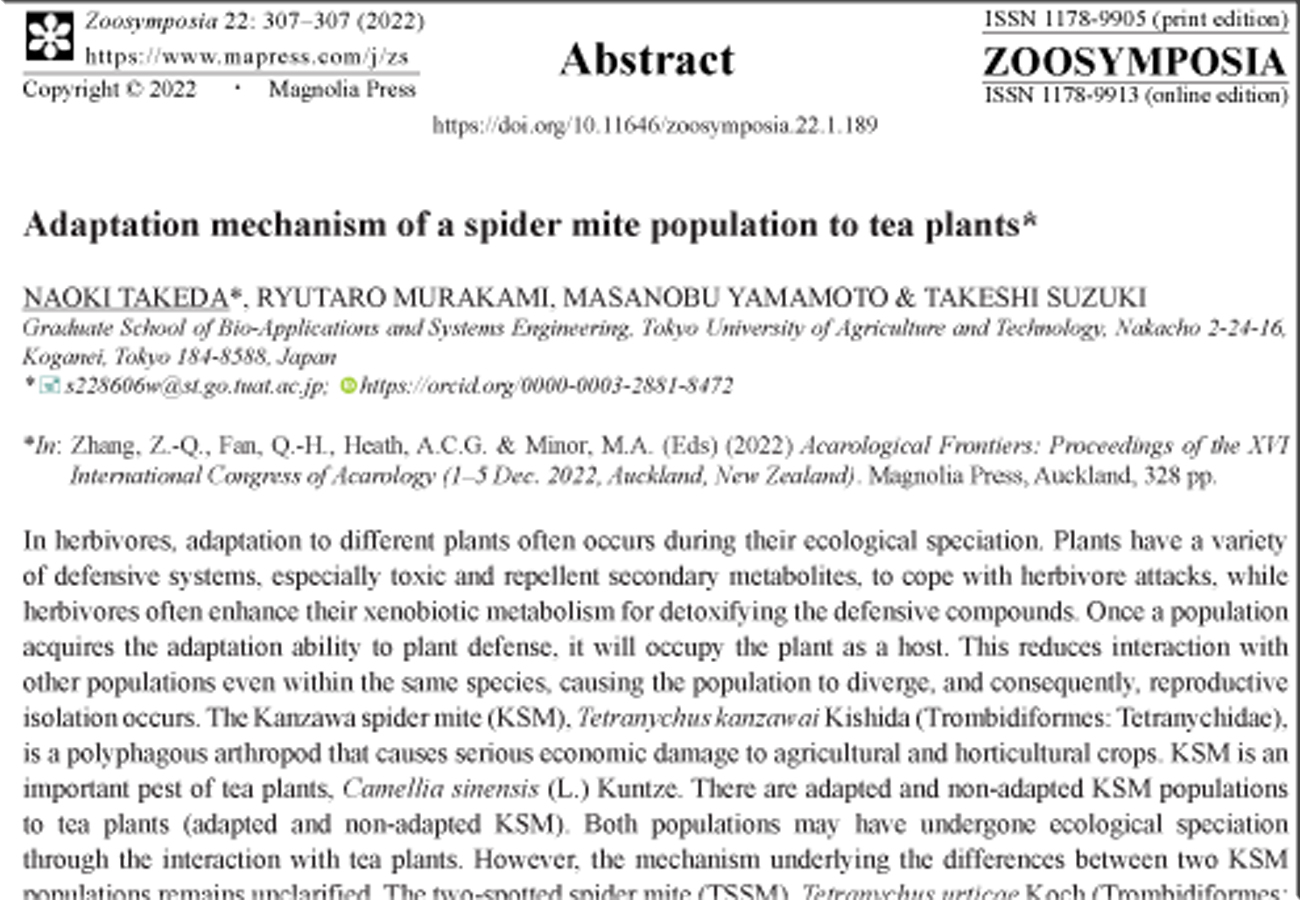Abstract
In herbivores, adaptation to different plants often occurs during their ecological speciation. Plants have a variety of defensive systems, especially toxic and repellent secondary metabolites, to cope with herbivore attacks, while herbivores often enhance their xenobiotic metabolism for detoxifying the defensive compounds. Once a population acquires the adaptation ability to plant defense, it will occupy the plant as a host. This reduces interaction with other populations even within the same species, causing the population to diverge, and consequently, reproductive isolation occurs. The Kanzawa spider mite (KSM), Tetranychus kanzawai Kishida (Trombidiformes: Tetranychidae), is a polyphagous arthropod that causes serious economic damage to agricultural and horticultural crops. KSM is an important pest of tea plants, Camellia sinensis (L.) Kuntze. There are adapted and non-adapted KSM populations to tea plants (adapted and non-adapted KSM). Both populations may have undergone ecological speciation through the interaction with tea plants. However, the mechanism underlying the differences between two KSM populations remains unclarified. The two-spotted spider mite (TSSM), Tetranychus urticae Koch (Trombidiformes: Tetranychidae), is closely related to KSM. Based on the highly-annotated TSSM genome sequence, we conducted comparative transcriptome and proteome analyses among adapted and non-adapted KSM, and TSSM on tea plants and the preferable host bean plants. Xenobiotic-metabolizing enzymes containing catechol dioxygenase, carboxylesterase, ABC transporter, Cathepsin L, and UDP-glycosyltransferase were upregulated in adapted KSM on tea plants. Gene Ontology (GO) analysis and Kyoto Encyclopedia of Genes and Genomes (KEGG) pathway analysis showed that pathways related to oxidoreductase activity were particularly enriched in adapted KSM on tea plants. These enzymes should be dealing with catechins which are known as secondary metabolites of tea plants and to be toxic to spider mites. The survival rate in adapted KSM on tea plants was significantly reduced by RNAi targeting the gene encoding a catechol dioxygenase (TkCTD). These results suggest that TkCTD-mediated detoxification is involved in the adaptation of KSM to tea plants.
References
-


